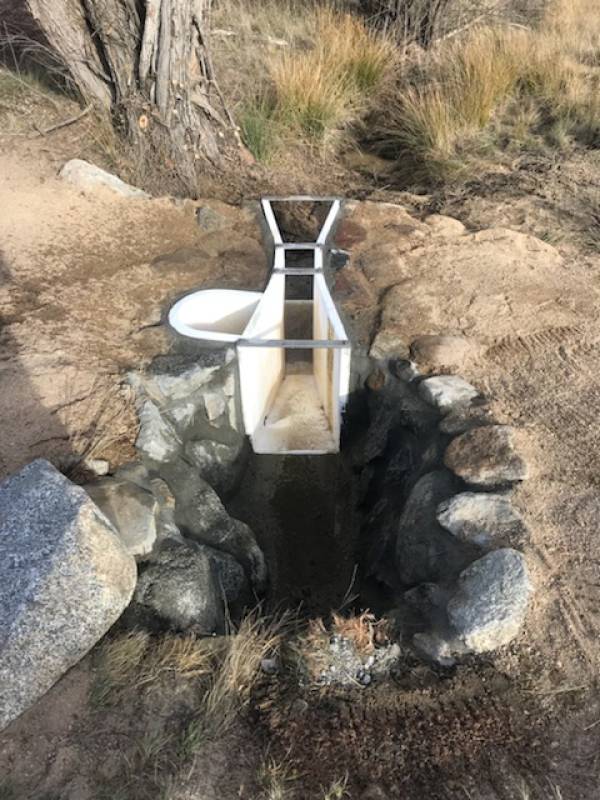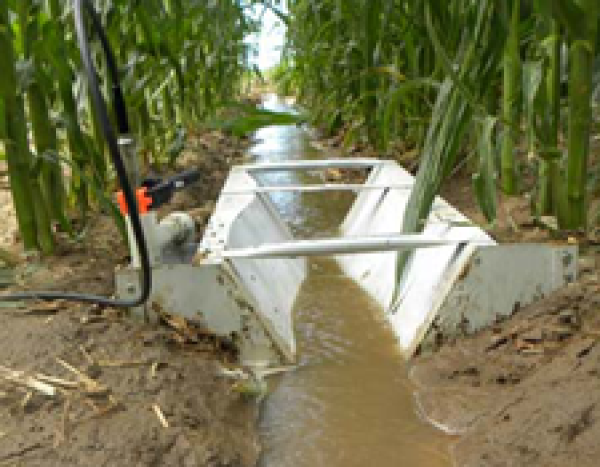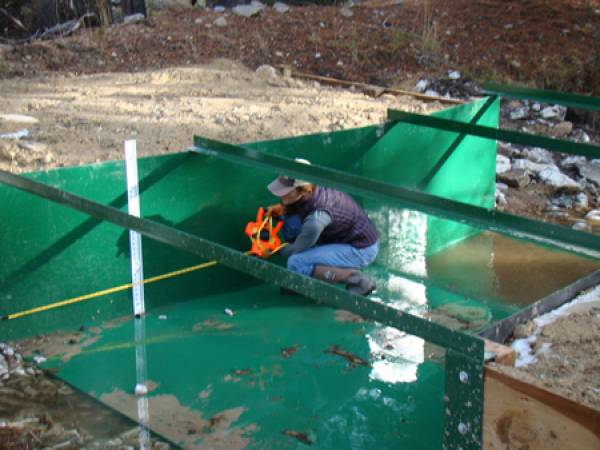This website uses a variety of cookies, which you consent to if you continue to use this site. You can read our Privacy Policy for
details about how these cookies are used, and to grant or withdraw your consent for certain types of cookies.
How Small Users Can Comply with California SB 88
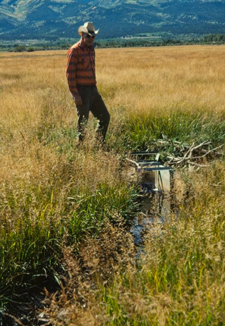 With the adoption of SB 88 by the California State Water Board all smaller water users are now required to monitor and report the usage. This can be daunting. But take hope…all is not lost!
With the adoption of SB 88 by the California State Water Board all smaller water users are now required to monitor and report the usage. This can be daunting. But take hope…all is not lost!
At the center of any compliance program is the flow meter. For non-pumped sources, a flume or weir is the most common device used – flumes being preferred.
When compared to weirs, flumes have:
- Reduced maintenance costs
- Low head requirements (~1/4 of that for a similarly sized weir)
- A wider selection of styles and sizes
- Easier to gauge water level in
- Pass sediments, floating debris, and solids well
Weirs have:
- Lower device costs (excluding the weir pool which itself may be costly to develop)
- A range of styles and sizes
- Have simple flow equations
Is a Flume or Weir More Accurate?
They work out to be about the same when all sources of error are accounted for. In practice, any primary device (flume or weir) has an overall system accuracy of +/- 8-10% - within SB 88’s requirements.
Now, this system accuracy depends upon the device being properly size, sited, and maintained. Flumes or weirs that shift / settle out of position, are installed at sites that they aren’t suited for, or which aren’t maintained (including the upstream/downstream channels) can be incredibly inaccurate – upwards of 30%.
Are You Sure? Everyone Says Weirs Are More Accurate!
While in a laboratory setting weirs can be accurate to +/- 2-3% and flumes to +/- 2-5% (varies by flume type, flow rate, and size), the reality is that weirs are for more demanding of regular maintenance [of both the weir crest (flow edge) and weir pool]
Also, for a weir to properly function, a certain amount of head is required (0.2-feet). Below this level and there is insufficient head to ensure the nappe (flow of water over the crest) springs clear. When this happens, the nappe may periodically collapse against the downstream face – making flow readings unsteady. While small v-notch weirs (22-1/2º) can go down to 3.990 gpm, particular flume types can go even lower – down to 1.46 gpm for a 1-inch Parshall.
Keep in mind that Openchannelflow sells both flumes and weirs – so our comments are based upon operational factors and not having a vested interest one way or the other.
Maintenance
The need for occasional maintenance – whether you use a flume or weir – cannot be overstated.
A study by the State of Utah and the Utah Water Research Laboratory found that 2/3rds of the surveyed installations did not meet accuracy requirements.
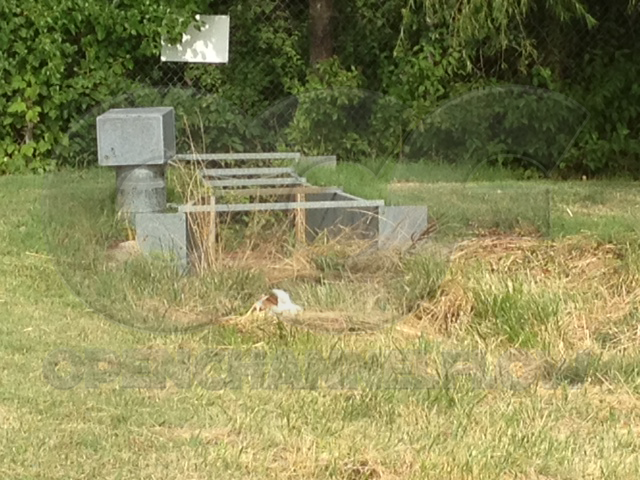
For Parshall flumes alone, sources of error found were:
| Assessment Criteria | Devices* |
| Acceptable Condition | 20 |
| Bent, broken, or caving in | 13 |
| Blockage | 6 |
| Bypassing flow | 5 |
| Cavitation | 2 |
| Corrosion, rust, or worn concrete | 25 |
| Improper approach | 26 |
| Improper installation or parameters | 5 |
| Incorrect geometry | 20 |
| Incorrect or no Ha measurement | 35 |
| Incorrect or no Hb measurement | 52 |
| Settlement | 34 |
| Vegetation or debris in entrance | 28 |
| *Devices can exhibit more than one criteria | |
The above is similar for weirs. Additionally, weirs are need maintenance at the flow edge (crest) so that it is free of debris, nicks, etc. The upstream weir pool also needs to be clear of sediment and debris – depending upon the site, this can be a little or a lot. The ability of flumes to pass sediment and debris really makes them shine versus weirs. For small users, the reduced maintenance of a flume makes it a more attractive option than a weir – even given the higher upfront cost.
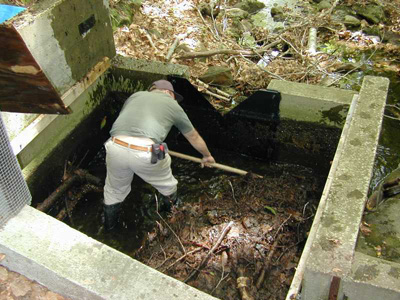
If you want to run afoul of SB 88 just ignore site maintenance.
What Flumes Are Used?
Water rights are most commonly measured by Parshall and Cutthroat flumes.
Parshalls have a long history of use for just this type of application – almost 100 years. They work well to pass solids and debris, are standardized, and have both good low-end flow rates and rangeability. Parshalls are sized by throat width and are available in 22 prefabricated sized from 1-inch to 144-inches. For really large flows, site-built flumes can be made up to 50-feet wide.
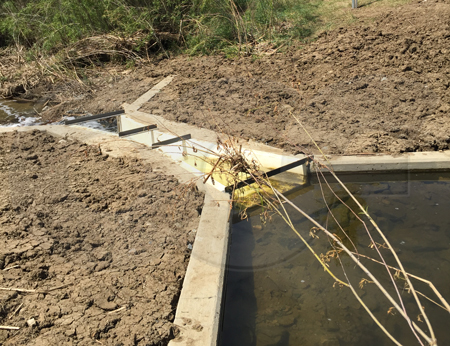
Cutthroat flumes are similar to Parshall flumes in that they have an hourglass shape when viewed from above. Unlike the Parshall, they have no extended throat (hence “Cutthroat”) and the floor of the flume is flat. Cutthroat flumes are a good choice when retrofitting into a relatively flat channel where the drop through the Parshall is a problem.
Cutthroat flumes are available in 16 prefabricated sizes. Also, unlike the Parshall, intermediate Cutthroat sizes can be developed without the need to laboratory rate the flume.
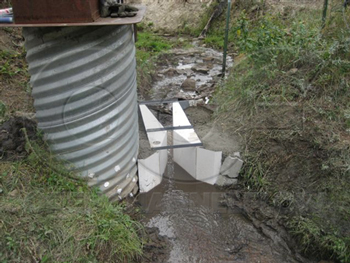
What Weirs Are Used?
If flows are low, V-notch weirs can be used. For larger flows, rectangular notched weirs are used. For varying flows, compound weirs are used – usually combining a V-notch weir to measure low flow and a rectangular weir to measure higher flows. Keep in mind that regardless of weir type, the maximum head over the weir cannot be more than 2-feet.

Weir Flow Terminology
Weirs have their own terminology that describes their design, use, and function. Sometimes it's overwhelming, so we've collected the terms here to help.
How Do I Choose Between A Flume Or A Weir?
Choices, choices, choices! We can help. We've put together articles on:
Our you can skip to the head of the line and talk directly with your local representative (below)!
How Can Openchannelflow Help?
Your local Openchannelflow California representative – Kent Bricker of Southland Water Technologies (800–795-5231) has been working with SB 88 water users to develop cost effective monitoring and reporting solutions.
Contact Kent today to see how Southland Water Technologies / Openchannelflow can help you come into compliance.
Related Blog Posts
Explore more insights in our blog.

LOCATIONS IN ATLANTA, GA & BOISE, ID


